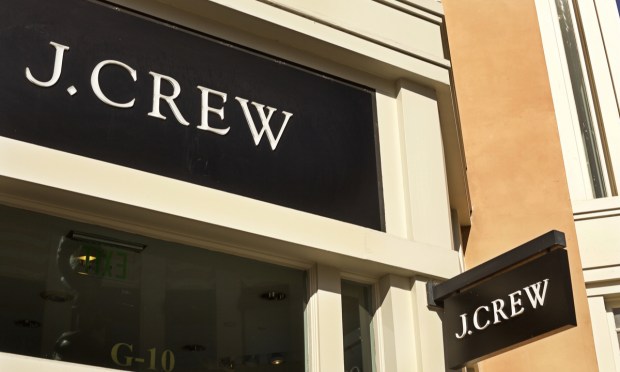Can Exclusive 48-Hour Product Preview Access Save J.Crew?

J.Crew once had a chokehold on a cohort of consumers who seemingly loved the preppy vibe along with brands like Abercrombie & Fitch and Hollister Co. Today, the flame as faded out as J.Crew’s product assortment no longer seems to resonate with consumers, reflected in the retailer’s latest earnings call.
However, in a bid for relevancy, and after a successful introduction of the J.Crew Passport rewards program, the brand is now preparing to elevate its retail experience through the introduction of the new J.Crew app. This app provides advanced notice on new merchandise and facilitates faster checkouts. However, considering the current challenges of inflation and consumer loyalty, are 48-hour early access to product launches enough for the struggling retailer?
The primary goal of this app is to streamline the checkout process for customers, ensuring a faster and more convenient shopping experience. Additionally, the app aims to offer personalized product recommendations, enriching the overall shopping journey for each individual customer.
According to CMO Derek Yarbrough, J.Crew’s new app takes inspiration from the shopping behaviors of the retailer’s customers. With over two-thirds of J.Crew’s online store traffic originating from mobile devices in the previous fiscal year, the app is designed to meet the increasing consumer preference for mobile shopping.
Yarbrough underscored the importance of integrating J.Crew’s loyalty programs into the brand’s mobile strategy.
“We launched our J.Crew Passport loyalty program in the last couple of years, and we have seen a lot of success there,” Yarbrough said. “This app is an extension of that program to drive adoption from our most loyal customers, while also appealing to a new customer doing the majority of their shopping online.”
J.Crew is promoting the app through multiple marketing channels, including email, social media, SMS, and in-store signage. Mobile commerce has gained prominence in the retail industry. According to a study by Glossy conducted in April, 40% of U.S. survey participants stated that they primarily engage in shopping through mobile apps or mobile websites.
J.Crew Continues to Slump
Just last month, PYMNTS reported that the retailer struggled to win back its base of loyal customers in the previous quarter.
In a statement, the New York-based company disclosed a 7% decline in same-store sales for the last quarter, a slight improvement from the 8 percent decrease recorded the previous year. Additionally, the company reported a 3% drop in revenue, amounting to $567.5 million.
According to the company’s CEO, Millard Drexler, the challenging retail environment has presented significant obstacles for the company, making it difficult to achieve its goals.
In an effort to regain the loyalty of its customer base, the retailer has been revamping its product line and marketing initiatives. Throughout the past year, the company has faced ongoing challenges such as style misses, inventory issues, and a decline in perceived quality, all while implementing budget cuts.
The move follows the impact J.Crew saw with its year-round frequent sales, as it appeared that a significant number of J.Crew’s customers have developed a tendency to wait for sales before making purchases, rather than buying items at full price.
J.Crew’s Efforts and Today’s Consumer
In J.Crew’s bid for relevancy, the retailer has also looked to go virtual.
To commemorate J. Crew’s 40th anniversary, the brand launched its first immersive shopping experience in partnership with the eCommerce platform Obsess. The move follows other brands like Laneige and Elizabeth Arden, but lacks foundational data to prove that these efforts are investment-worthy or just a trend.
Read more: J. Crew, Laneige, Elizabeth Arden Embrace Virtual Storefronts to Drive Engagement and Loyalty
In terms of the consumer today, while online coupons and rewards tend to be a powerful draw, payments is where it’s at.
Solidifying this sentiment are findings from PYMNTS’ study “Big Retail’s Innovation Mandate: Convenience and Personalization,” which revealed that consumers have a strong preference for paying in the way they deem most suitable. The study further highlights that 68% of retailers believe that customers would switch to different merchants if they were not provided with alternative payment methods in physical stores.
Also, simplicity is found to be essential. According research from PYMNTS’ study “Consumer Inflation Sentiment: The False Appeal of Deal-Chasing Consumers,” 77% of consumers cite ease/convenience as an important factor that influenced their decision of where to make their most recent grocery purchase.
As for membership programs and loyalty, a significant majority of consumers are now making at least a portion of their eCommerce purchases from retailers where they hold memberships. Based on a PYMNTS survey conducted in April, which included nearly 2,700 U.S. consumers, 61% of U.S. consumers are Amazon Prime members, while 26% are subscribed to Walmart+. Interestingly, only 35% of consumers are not members of either service.
Hence, while memberships appear to be a promising strategy, the critical issue of product relevancy still looms over J.Crew. The evaluation of whether the 48-hour early access and asking consumers to download an app (a critical friction point) will truly benefit consumers and contribute to the overall effectiveness of the app will be assessed during the company’s upcoming earnings call.
